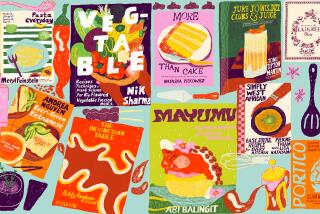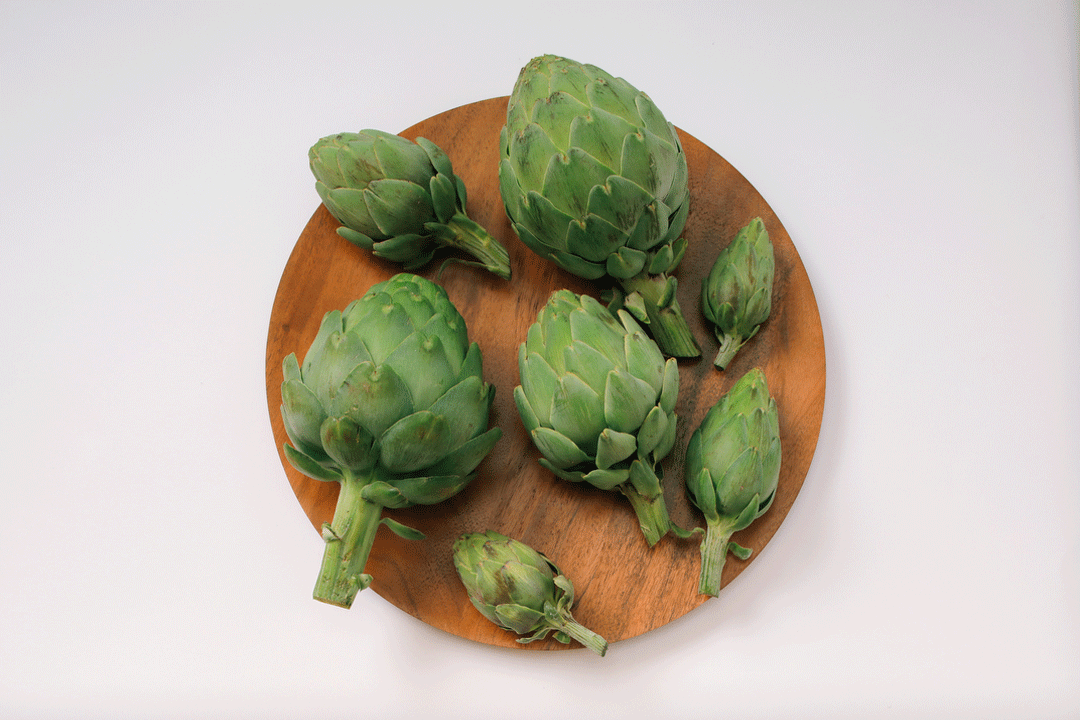Artichoke ideas bloom
I was giving one of my periodic talks at local libraries the other day, and someone asked if I knew a good way to prepare artichokes. It stopped me cold. “A” good way? Only one? Which one? Do you want artichokes by themselves? Do you want artichokes as an ingredient? Do you want them cooked or do you want them raw? Too many choices.
Despite the fact that they look so unquestionably inedible, there is no shortage of ways to cook artichokes. In fact, just talking about them for a couple of minutes got me so hungry I went home and prepared an all-artichoke dinner.
That may sound strange. The vast majority of artichokes are consumed only one way: boiled or steamed and served with drawn butter or flavored mayonnaise. And certainly, there’s absolutely nothing wrong with that. The only problem is believing that that’s where artichokes end. There’s a lot more to the artichoke than you might have thought.
Granted, there are a few things you need to be aware of when you’re cooking them. Artichokes take some preparation, to be sure (see the website for more details).
And don’t leave out the step of periodically dipping them in acidulated water, or they’ll turn dark and rusty (it’s ugly, but not harmful, a result of the same kind of enzymatic browning that occurs to a lesser extent in a wide range of fruits and vegetables, including apples, potatoes and bananas).
Maybe the most important thing to remember, though, is to pass by those big old artichokes you used to use for steaming (growers call them “hubcaps”) and choose instead either medium or baby chokes. These are different from the big guys only in size, not in maturity or flavor.
A typical artichoke plant will produce one or two hubcaps, a half-dozen or so mediums and even more “babies.” So the big chokes are not only the most commonly used but they’re also the scarcest, and that adds up to a high price. You can usually find the smaller chokes at a fraction of the cost (around 75 cents apiece for mediums, as opposed to three bucks or more for the largest).
So what do you do with these little artichokes? They’re great simply glazed as a side dish: Quarter them, put them in a skillet with just enough water to cover the bottom and a good glug of olive oil; cook covered at medium until they’re tender, then remove the lid and increase to high until the liquid evaporates to form a syrup; season as you wish (garlic certainly, other herbs as seem right).
You can use this basic technique to start all sorts of dishes -- sauces for pasta, first step in risottos, even vegetable stews. I love the combination of artichokes and potatoes, particularly when you bind them with cream and bacon.
If you want to be one of the cool kids, the thing to do is serve artichokes raw. I know it sounds weird, and only a couple of years ago it was almost unheard of. But they are good if you shave them very, very thin (1/16 inch is noticeably better than 1/8) and season them aggressively with lemon juice and olive oil. They’ve got a great crunch and a subtly sweet flavor.
Never underestimate an artichoke.
--
--
Artichoke and farro salad
Total time: About 1 hour
Servings: 4 to 6
--
1 1/2 cups farro
4 1/2 cups water
Salt
3 tablespoons minced red onion
1/4 cup fruity olive oil
3 tablespoons lemon juice
4 medium artichokes, trimmed to hearts and stored in acidulated water
1/4 cup lightly packed parsley leaves
Parmigiano-Reggiano
--
1. Toast the farro in a dry medium saucepan over medium heat until it smells nutty and turns golden, about 5 minutes. Add the water and bring to a simmer. Season with one-half teaspoon salt and cook until the farro is tender, about 45 minutes. Drain (there will probably still be some liquid left), rinse in cold running water and gently pat dry in a kitchen towel.
2. Place the farro in a mixing bowl, add minced red onion and more salt if necessary, and set aside. (The dish can be prepared to this point up to a day ahead and refrigerated tightly covered.)
3. Whisk together olive oil and lemon juice and stir it into the farro mixture.
4. Using a mandoline, shave the artichoke hearts as thin as possible, one-eighth inch is adequate, one-sixteenth is better. Add this to the farro mixture along with most of the parsley leaves, and fold together.
5. Divide the mixture evenly among the serving plates or arrange on a platter. Use a vegetable peeler to shave over thin strips of Parmigiano-Reggiano (you’ll need about 1 ounce), and scatter remaining parsley leaves over the top.
Each serving: 315 calories; 9 grams protein; 44 grams carbohydrates; 12 grams fiber; 12 grams fat; 2 grams saturated fat; 4 mg cholesterol; 2 grams sugar; 180 mg sodium.
--
Artichoke, bacon and new potato stew
--
Total time: 50 minutes
Servings: 4 to 6
--
1 pound new potatoes
2 strips thick bacon, cut into 1/2-inch crosswise strips
1 tablespoon minced shallots
4 medium artichokes, trimmed to hearts and stems, quartered lengthwise and stored in acidulated water
3/4 cup water
1/2 cup cream
Salt
2 tablespoons minced chives
--
1. Steam the potatoes until tender, about 15 minutes, and set aside. When cool enough to handle, cut into bite-sized pieces.
2. Fry cut-up bacon in a dry skillet over medium heat until brown, about 10 minutes. Discard all but about 1 to 2 teaspoons of fat and add the shallots. Cook until the shallots are fragrant and tender, about 3 minutes.
3. Add the artichokes and the water, cover tightly, and cook until the artichokes are tender, 10 to 15 minutes.
4. Remove the lid, increase the heat to high and cook, stirring, until the liquid has reduced to traces of syrup, about 5 minutes.
5. Add the cut-up potatoes and stir to coat with juices. Add the cream and salt to taste and continue cooking over high heat until the cream has thickened and reduced enough to coat the potatoes and artichokes lightly, about 5 minutes.
6. Remove from heat and stir in the minced chives before turning into a serving bowl.
Each serving: 194 calories; 5 grams protein; 23 grams carbohydrates; 8 grams fiber; 10 grams fat; 5 grams saturated fat; 31 mg cholesterol; 2 grams sugar; 125 mg sodium.
More to Read
Eat your way across L.A.
Get our weekly Tasting Notes newsletter for reviews, news and more.
You may occasionally receive promotional content from the Los Angeles Times.











